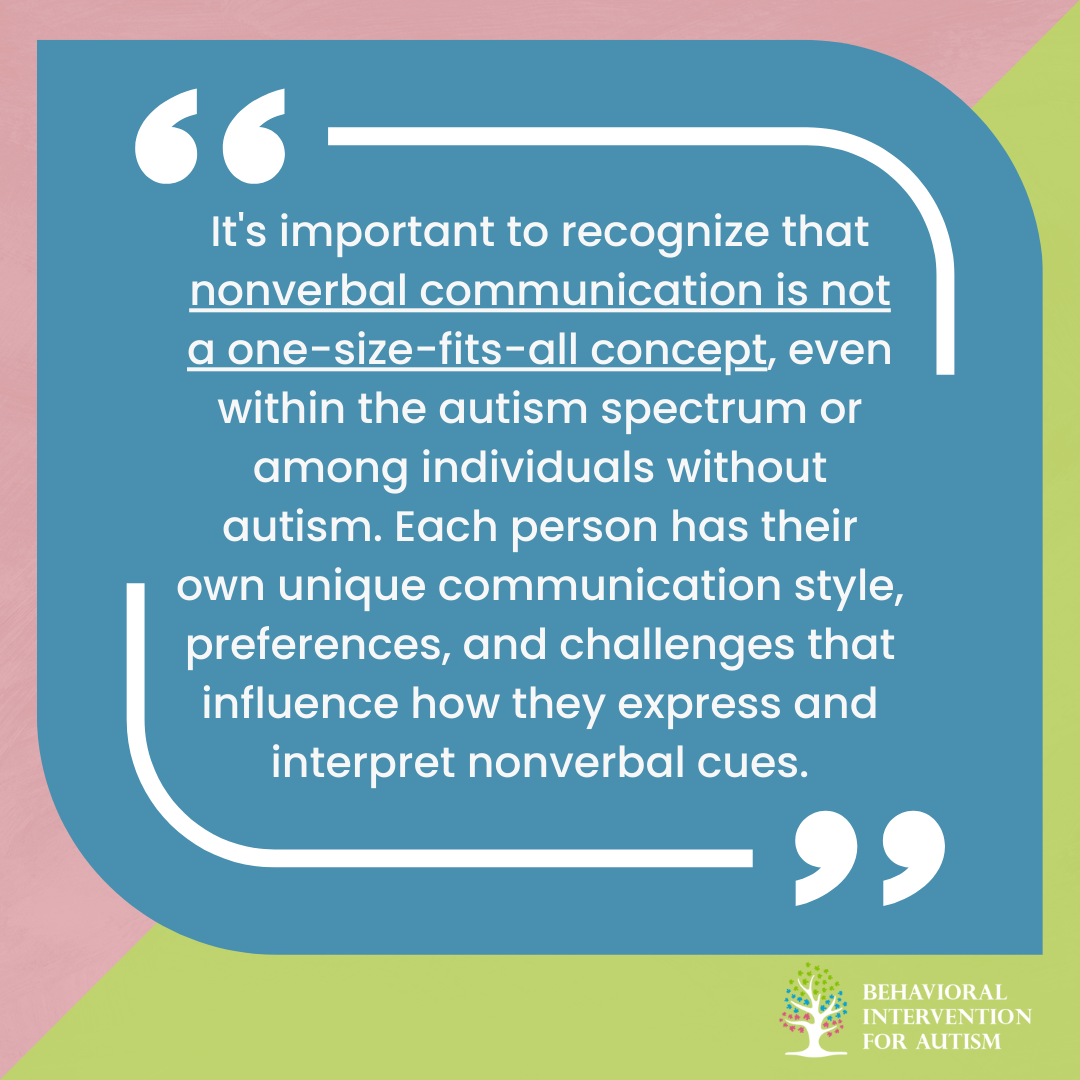
Table of Contents
Nonverbal cues are crucial for conveying messages and emotions, playing a significant role in effective communication. Understanding nonverbal communication goes beyond spoken words, enhancing interactions in various contexts. Let’s explore the overview of nonverbal communication and the importance of these cues.
Can You Go Nonverbal Without Autism?
Yes, it is possible to go nonverbal without having autism. Individuals may experience a range of circumstances that can lead to a loss of speech, such as neurological conditions, brain injuries, or developmental disorders that are not classified as autism. Conditions like stroke, traumatic brain injury, or other speech-related disorders can affect an individual’s ability to communicate verbally. Additionally, some people may choose to become nonverbal as a form of self-expression or coping mechanism in response to trauma or stress.
On the other hand, nonverbal communication can also be associated with autism spectrum disorder (ASD). Many individuals on the autism spectrum may have difficulty with verbal communication and may be nonverbal or minimally verbal. However, this does not mean that nonverbal communication is exclusive to autism. Although autism is frequently associated with nonverbalism, several other factors and conditions can lead to an individual being nonverbal, highlighting that the two are not inherently linked.
Overview of Nonverbal Communication
Nonverbal communication encompasses the transmission of information through non-linguistic means such as gestures, facial expressions, body language, eye contact, tone of voice, and touch. These subtle cues can convey emotions, attitudes, and intentions, adding depth and richness to interpersonal communication.
Nonverbal communication is a universal aspect of human interaction, transcending cultural and language barriers. It can enhance or contradict verbal messages, providing additional context and insight into the thoughts and feelings of individuals. Recognizing and interpreting nonverbal cues is crucial for building rapport, establishing trust, and fostering positive relationships.
Importance of Nonverbal Cues
Nonverbal cues play a crucial role in communication dynamics, accounting for a significant portion of the overall message being conveyed. Research suggests that up to 93% of communication is nonverbal, highlighting the importance of paying attention to these subtle signals.
Nonverbal cues can influence the interpretation of verbal messages, shaping how information is perceived and understood. They can communicate emotions more effectively than words alone, promoting empathy, connection, and mutual understanding. Being attuned to nonverbal cues can help individuals navigate social interactions, resolve conflicts, and build stronger interpersonal bonds.
Understanding the nuances of nonverbal communication is valuable not only in personal relationships but also in professional settings, such as job interviews, presentations, and negotiations. By honing their ability to interpret and utilize nonverbal cues effectively, individuals can enhance their communication skills and convey their messages with clarity and impact.

Factors Leading to Nonverbal Communication
While autism is a common reason for nonverbal behavior, there are numerous other factors that can lead individuals to become nonverbal or communicate nonverbally. Here are some of those factors:
1. Developmental Disorders
In addition to autism, other developmental disorders can result in nonverbal communication. Conditions such as:
- Intellectual Disability: Some individuals may have cognitive limitations that impact their ability to develop verbal communication skills.
- Down Syndrome: This genetic condition can affect speech development and lead to varying degrees of nonverbal communication.
- Fragile X Syndrome: Associated with intellectual disabilities, individuals with Fragile X may also exhibit challenges in verbal communication.
2. Trauma or Stress
Experiencing significant trauma or stress can lead to temporary or permanent changes in communication. Factors include:
- Post-Traumatic Stress Disorder (PTSD): Individuals who have experienced trauma may withdraw from verbal communication as a coping mechanism.
- Severe Anxiety Disorders: Anxiety can manifest in various ways, including difficulty speaking or expressing oneself verbally in certain situations.
3. Medical Conditions
Certain medical conditions can also lead to nonverbal communication:
- Stroke or Brain Injury: Damage to areas of the brain responsible for language can affect an individual’s ability to speak.
- Aphasia: This language disorder can occur after brain damage and may lead to difficulties in speaking or understanding language, while some individuals may become completely nonverbal.
4. Social Factors
The social environment plays a crucial role in communication:
- Cultural Differences: In some cultures, nonverbal communication may be more prevalent, and individuals may not prioritize verbal communication.
- Isolation or Lack of Social Interaction: Individuals who have limited social experiences may struggle to develop verbal communication skills.
5. Choice or Preference
Some individuals may choose to communicate nonverbally due to personal preferences or philosophies regarding communication. This can be seen in:
- Selective Mutism: This anxiety disorder can lead individuals to speak only in certain situations, while remaining silent in others.
- Philosophical Beliefs: Some may believe in minimalistic or nonverbal communication as a lifestyle choice.

Differences Between Nonverbal Communication in Autism and Non-Autism
Comparing nonverbal communication in individuals with autism to those without reveals distinct differences in how cues are expressed and interpreted. Understanding these differences is essential for caregivers, educators, and individuals to navigate social interactions effectively.
Contrasting Aspects of Nonverbal Communication
In the context of autism, nonverbal communication challenges are often more pronounced and can present in various ways. Individuals with autism may struggle with interpreting facial expressions, body language, tone of voice, and gestures, leading to difficulties in understanding social cues and emotions. This can result in challenges in maintaining eye contact, using appropriate gestures, and responding to nonverbal cues from others.
On the other hand, nonverbal communication in individuals without autism tends to follow more typical patterns. People without autism typically rely on nonverbal cues to convey emotions, intentions, and social nuances effectively. They can effortlessly interpret subtle facial expressions, body movements, and vocal tones to gauge a person’s feelings and respond accordingly.
Individual Variances and Considerations

Within the autism community, there is a wide range of communication abilities and preferences. Some individuals may excel in certain nonverbal communication aspects, such as using sign language or visual aids, while others may struggle with maintaining eye contact or understanding sarcasm. Understanding the individual variances within the autism spectrum is crucial for providing tailored support and promoting effective communication.
Similarly, individuals without autism also exhibit differences in nonverbal communication styles. Cultural backgrounds, personal experiences, and individual personalities can shape how people express themselves nonverbally. Recognizing and respecting these individual variances can foster meaningful and authentic communication interactions across diverse populations.
Acknowledging the differences in nonverbal communication between individuals with autism and those without fosters a more inclusive society where everyone feels valued and heard. This awareness and acceptance help bridge communication gaps and cultivate meaningful connections that go beyond verbal language.
Discover How We Can Help
While many associate nonverbal communication with autism, it is possible for individuals without autism to become nonverbal due to various factors, including neurological conditions or trauma. Understanding the reasons behind nonverbal behavior can provide valuable insights into communication and social interaction.
Behavioral Intervention For Autism offers comprehensive ABA therapy in Florida that addresses individual communication needs, helping clients develop effective ways to express themselves. Our skilled team focuses on creating tailored strategies to empower each person and improve their overall quality of life. If you’re curious about how our services can benefit you or someone you care about, connect with us today to learn more!
- 9 Common Obsessions of Children With Autism You Should Know - February 25, 2025
- What is Neurodiversity? A Guide to Embracing Differences - February 25, 2025
- Understanding Hyperfocus in Autism: What It Means and Why It Happens - February 25, 2025
